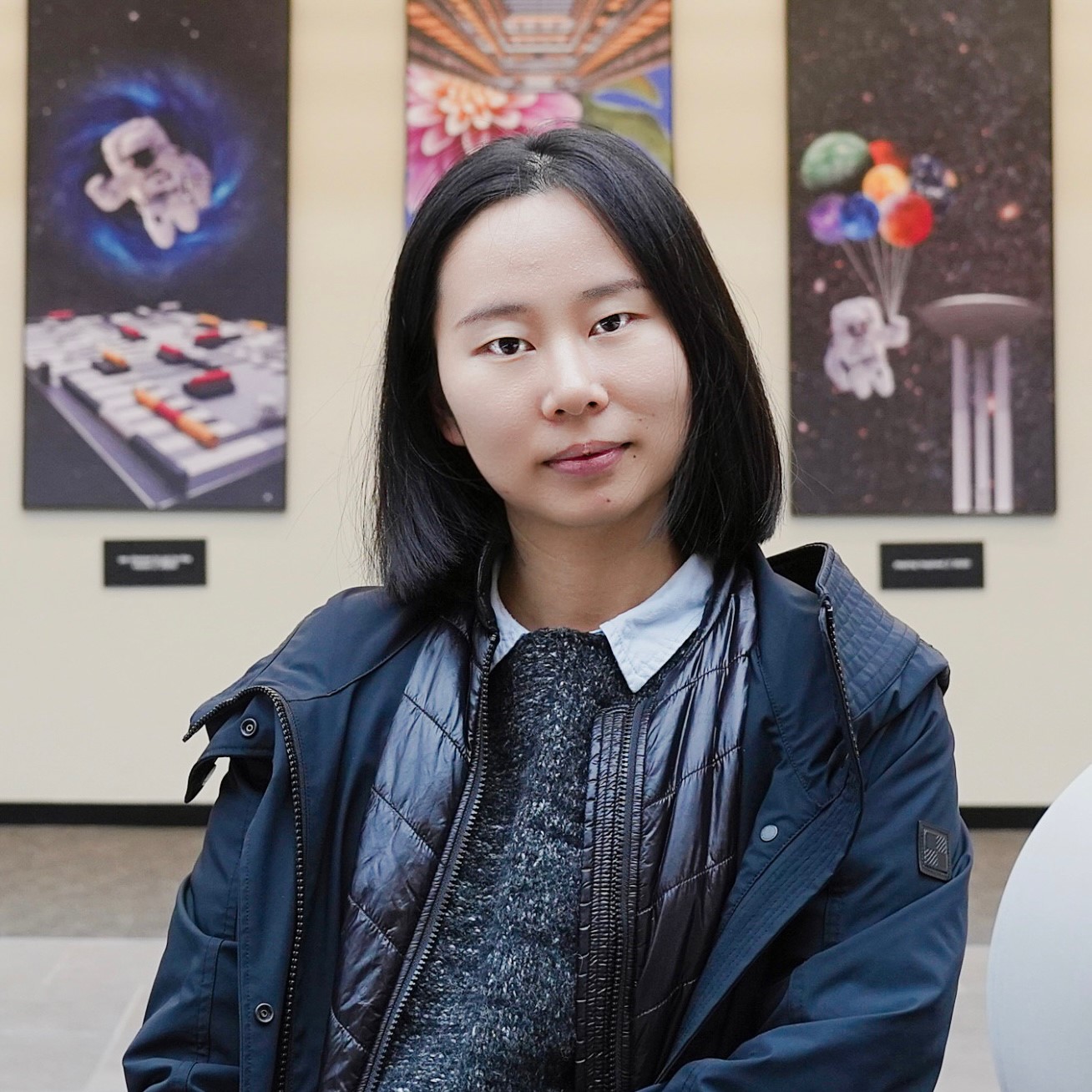Our Research
Our research focuses on investigating various astrophysical problems related to the interstellar medium and molecular clouds, including predicting fundamental physical conditions like gas number density, radiation fields, magnetic field strength and direction, and 3D velocity fields. We also explore generative model applications in magneto-hydrodynamic simulations, such as turbulence generation.
Currently, we mainly use Diffusion Models (DMs) as the machine learning tool for solving the above astrophysical problems. Diffusion Models (DMs) are state-of-the-art methods for data generation in Computer Vision and Machine Learning, and have achieved very impressive performance in synthesizing images, videos, and audio. The core design of DMs, inspired by natural thermodynamics, considers a stochastic Markov process in two directions and models a random walk in the high-dimensional space, which we find very suitable and promising to solve real physical problems.
We publish works in both astrophysical and ML research venues, with slightly different emphases. For researchers from the Astro side, you may find the papers in astrophysical venues more interesting. For researchers from the CS side, we try to provide more ML interpretations and inspirations in papers published in ML/CV community.
Latest News
-
[September 2025] Our work on Dynamic Diffusion Schrödinger Bridge in astrophysical observational inversions has been accepted at NeurIPS 2025. [Main paper]
-
[February 2025] Our main paper on using DDPMs to predict magnetic field strength in molecular clouds has been published in The Astrophysical Journal (ApJ). [Main paper]
-
[May 2024] Our invited review paper on segmentation methods in astronomical images has been accepted for the special issue on machine learning methods in modern astronomy in Astronomy & Computing. [Main paper]
-
[April 2023] Our main paper about DDPMs for molecular clouds density predication got accpeted to The Astrophysical Journal (APJ). [Main paper]
-
[March 2023] Our work that applies the Denoising Diffusion Probabilistic Models (DDPMs) for predicating the density of molecular clouds got accepted to ICLR Physics4ML Workshop 2023! [OpenReview]
Publications in Astronomy

Surveying Image Segmentation Approaches in Astronomy
Duo Xu, Ye Zhu. Invited review to appear in Astronomy & Computing's special issue on machine learning methods in modern astronomy
Image segmentation is key to unraveling the universe's secrets, giving astronomers a clearer view of celestial objects in complex images and data cubes. Manual segmentation is time-consuming and biased, making automated methods essential for consistent results. This review summarizes traditional segmentation methods, which, despite improvements, still require labor-intensive human corrections. It then highlights the transformative impact of machine learning, especially deep learning, on segmentation tasks. With state-of-the-art approaches enhancing accuracy in astronomical images and data cubes, astronomers are encouraged to adopt these advanced techniques, streamlining and improving the segmentation process in their research.
(paper link)

Predicting the Radiation Field of Molecular Clouds using Denoising Diffusion Probabilistic Models
Duo Xu, Stella Offner, Robert Gutermuth, Michael Grudic, David Guszejnov, Philip Hopkins. The Astrophysical Journal (APJ), 2023
Accurately quantifying the impact of radiation feedback in star formation is challenging. To address this complex problem, we employ deep learning techniques, denoising diffusion probabilistic models (DDPMs), to predict the interstellar radiation field (ISRF) strength based on three-band dust emission at 4.5 um, 24 um, and 250 um.
(paper link)
CMR Exploration II -- Filament Identification with Machine Learning
Duo Xu, Shuo Kong, Avichal Kaul, Hector Arce, Volker Ossenkopf-Okada. The Astrophysical Journal (APJ), 2023
We employ the convolutional neural network and the diffusion model to pinpoint filaments resulting from the collision-induced magnetic reconnection (CMR) mechanism. These models demonstrate high detection rates while maintaining low false detection rates. Moreover, both approaches effectively identify potential CMR filament candidates in real observational data.
(paper link)

Denoising Diffusion Probabilistic Models to Predict the Density of Molecular Clouds
Duo Xu, Jonathan C. Tan, Chia-Jung Hsu, and Ye Zhu. The Astrophysical Journal (APJ), 2023
We introduce the state-of-the-art deep learning Denoising Diffusion Probabilistic Model (DDPM) as a method to infer the volume or number density of giant molecular clouds (GMCs) from projected mass surface density maps, and conclude that the diffusion model achieves an order of magnitude improvement on the accuracy of predicting number density compared to that by other methods.
(paper link)
Application of Convolutional Neural Networks to Predict Magnetic Fields' Directions in Turbulent Clouds
Duo Xu, Chi-Yan Law, Jonathan C. Tan. The Astrophysical Journal (APJ), 2023
We utilize a convolutional neural network named CASI-3D (Convolutional Approach to Structure Identification-3D) to predict the orientation of magnetic fields within sub-/trans-Alfvénic turbulent clouds based on molecular line emission data. Remarkably, the predictions provided by CASI-3D align closely with the magnetic field direction deduced from Planck dust polarization measurements.
(paper link)
Application of Convolutional Neural Networks to Identify Stellar Feedback
Duo Xu, Stella Offner, Robert Gutermuth, Colin Van Oort, Shuo Kong, Hector Arce, Jonathan Tan. The Astrophysical Journal (APJ), 2020-2022
We employ a convolutional neural network called CASI-3D (Convolutional Approach to Structure Identification-3D) to detect and characterize protostellar feedback structures, including bubbles and outflows. CASI-3D effectively identifies protostellar feedback structures within nearby molecular clouds.
(paper I)
(paper II)
(paper III)
(paper IV)
Publications in Computer Science

Denoising Diffusion Probabilistic Models to Predict the Number Density of Molecular Clouds in Astronomy
Duo Xu, Jonathan C. Tan, Chia-Jung Hsu, and Ye Zhu. ICLR Physics4ML Workshop, 2023
This is the short version for ICLR workshop.
(paper link)

